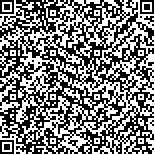| 引用本文: |
刘向荣,聂含竹,黄皓麟,孔祥建,蔡川,刘威,刘开英,李辉,王萌,廖玲菲.口疡防愈凝胶对大鼠放射性口腔炎的保护作用及机制研究[J].湖南中医药大学学报,2021,41(2):218-223[点击复制] |
|
| |
|
|
| 本文已被:浏览 1838次 下载 583次 |
| 口疡防愈凝胶对大鼠放射性口腔炎的保护作用及机制研究 |
| 刘向荣,聂含竹,黄皓麟,孔祥建,蔡川,刘威,刘开英,李辉,王萌,廖玲菲 |
| (常德市第一中医医院/湖南中医药大学附属常德医院, 湖南 常德 415000;南华大学衡阳医学院, 湖南 衡阳 421001;湖南中医药大学科技创新中心, 湖南 长沙 410208) |
| 摘要: |
| 目的 观察口疡防愈凝胶(Kouyang Fangyu gel,KFG)对放射性口腔炎的保护作用,并探讨其机制。方法 将50只SD大鼠随机分为空白对照组、轻度模型组、重度模型组、轻度模型+KFG治疗组、重度模型+KFG治疗组,每组10只。采用单次照射15 Gy和25 Gy X射线的方法分别建立轻度和重度口腔炎模型,并分别给予KFG药物治疗,连续7 d。于给药前及给药第3、5、7天时分别进行口腔黏膜炎症评分,采用HE染色法观察口腔黏膜病理变化,ELISA法检测血清促炎性因子TNF-α、IL-1β、IL-6及抗炎性因子IL-10的水平,免疫组化法检测黏膜TLR4、NF-κB表达。结果 轻度模型组口腔炎症自愈性明显,KFG不能明显缩短其愈合时间;重度模型组口腔溃疡面积及程度虽随着时间推移有减轻趋势,但在经KFG治疗后其评分快速下降,愈合明显加快;KFG能够改善重度口腔炎模型大鼠口腔黏膜病理形态,降低血清TNF-α、IL-1β、IL-6含量(P<0.05或P<0.01),升高IL-10水平(P<0.05),并抑制黏膜TLR4和NF-κB蛋白的表达(P<0.05或P<0.01)。结论 KFG对于重度放射性口腔炎有明显的治疗作用,其机制可能与抑制口腔黏膜TLR4/NF-κB信号通路,进而调节炎症因子水平有关。 |
| 关键词: 放射性口腔炎 口疡防愈凝胶 口腔黏膜 炎症因子 TLR4/NF-κB信号通路 |
| DOI:10.3969/j.issn.1674-070X.2021.02.011 |
| 投稿时间:2020-07-10 |
| 基金项目:湖南省自然科学基金项目(2019JJ50682);湖南省中医药管理局项目(201669);常德市科技局重点项目(2016SK17)。 |
|
| Study on the Protective Effect and Mechanism of Kouyang Fangyu Gel on Radiation Stomatitis in Rats |
| LIU Xiangrong,NIE Hanzhu,HUANG Haolin,KONG Xiangjian,CAI Chuan,LIU Wei,LIU Kaiying,LI Hui,WANG Meng,LIAO Lingfei |
| (Chinese Medicine Hospital in Changde/Changde Hospital Affiliated to Hunan University of Chinese Medicine, Changde, Hunan 415000, China;Hengyang Medical College of Nanhua University, Hengyang, Hunan 421001, China;Science and Technology Innovation Center of Hunan University of Chinese Medicine, Changsha, Hunan 410208, China) |
| Abstract: |
| Objective To observe the protective effect of Kouyang Fangyu gel (KFG) on radiation stomatitis and explore its mechanism. Methods 50 SD rats were randomly divided into the blank control group, the mild model group, the severe model group, the mild model + KFG treatment group, the severe model + KFG treatment group, with 10 rats in each group. A single exposure to 15 Gy and 25 Gy X-rays were used to establish mild and severe stomatitis models, respectively, and KFG drug treatment was given for 7 consecutive days. Oral mucosal inflammation scores were taken before and at 3rd, 5th, and 7th days after administration. HE staining was used to observe the pathological changes of oral mucosa. ELISA kit was used to detect the levels of serum pro-inflammatory factors TNF-α, IL-1β, IL-6 and anti-inflammatory factor IL-10, and immunohistochemical method was used to detect mucosal TLR4, NF-κB expression. Results In the mild model group, oral inflammation was obvious self-healing, and KFG could not shorten the healing time. The area and extent of oral ulcers in the severe model group tended to decrease over time, their scores decreased rapidly after healing with KFG, and healing was significantly accelerated. Meanwhile, KFG could improve the pathological morphology of oral mucosa in rats with severe stomatitis, reduce serum TNF-α, IL-1β, IL-6 levels (P<0.05 or P<0.01), increase IL-10 level (P<0.05), and inhibit the expression of TLR4 and NF-κB proteins in the mucosa (P<0.05 or P<0.01). Conclusion KFG has a significant therapeutic effect on severe radiation stomatitis, and its mechanism may be related to the inhibition of the TLR4/NF-κB signaling pathway in the oral mucosa and thus to regulate of inflammatory factor levels. |
| Key words: radiation stomatitis Kouyang Fangyu gel oral mucosa inflammatory factors TLR4/NF-κB signaling pathway |
|

二维码(扫一下试试看!) |
|
|
|
|




